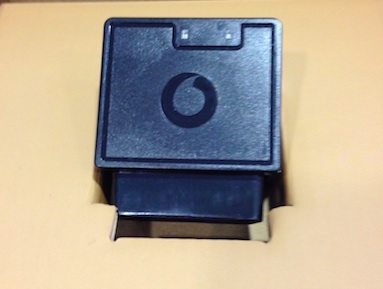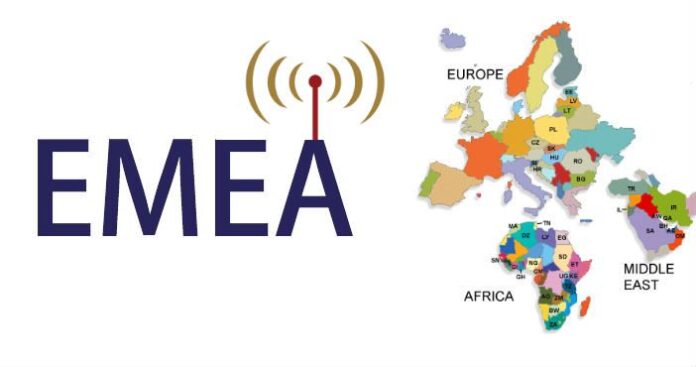Both Vodafone and Telefonica recently made announcements related to a stronger linkage in the telematics space. One is a partnership and one is an acquisition. On the surface I wasn’t really sure why these moves made sense from companies mainly focused on the value derived from their networks. After a more detailed discussion with both, the focus is clear. It’s about billing and services.
Let’s start with Vodafone’s acquisition of Cobra Automotive Technologies. Vodafone has been active in the M2M space for twenty years and they’ve got a substantial presence here – rated the No. 1 M2M mobile carrier worldwide by Machina Research earlier this year and 350 M2M experts worldwide (prior to the acquisition). Cobra is a staple in many of the luxury brands – Porsche and Bentley are two examples. The relationships they bring to Vodafone will quickly provide credibility to the overall solution.
Why focus on connected cars? This industry is already on a huge growth curve with much more expected over the next few years. According to a 2013 study by Strategy Analytics, there were 13 million shipments of embedded telematics systems, and by 2020 that number is expected to be 150 million, correlating to over 70% of vehicles being connected. Vehicle tracking and usage-based insurance functionality remains an aftermarket solution due to different regulation and priorities at a country level. About 25 million of the 1 billion cars on the road today are equipped with this functionality. That number is expected to grow to 65 million by 2018 and then decline as it becomes more mainstream and less aftermarket-focused.
There are four key drivers for connecting cars – cost savings, incremental revenue, better services for the customer and to stay ahead of the competition. Cost savings originally started with truck monitoring and now has expanded to automotive fleets. Customers can be offered new services allowing for additional management and monitoring of their vehicle’s maintenance, performance and whereabouts. There has also been a lot of discussion about new car purchasers being willing to buy a specific automotive brand based on the connected car features offered. I’ve admittedly questioned these studies given the strong emotion associated with automotive purchases and brand ownership for many buyers. The Cobra team offered an analogy on this topic that made me rethink this discussion. The analogy is that the smartphone has surpassed the automobile as a status symbol for young people in today’s society. Luxury car-makers now realize that their connected car functionality must perform at the level in which their automobile performs.
Regulatory frameworks are also driving the need to connect cars. These include e-call initiatives requiring the car to notify the appropriate authorities automatically in the event of a crash in many regions in Asia, Europe and the Middle East (to name a few), regulation in Brazil for mandatory vehicle tracking functionality due to high rates of car theft, and cameras in the vehicle in Russia to combat a high rate of fraudulent accidents to drive insurance reimbursement. On the flip side, these services are a tough sell in a country like Germany where there is almost no car theft or insurance fraud.
Today network operators are limited in the functionality they can provide to this industry without acquisitions or a larger ecosystem of partners. Connectivity is the primary focus along with mandatory B2B services, B2C in-car connectivity and a small set of data enable services per Vodafone. With the acquisition of Cobra, Vodafone can now offer an end-to-end solution to OEMs. In additional to those mentioned above, additional services will include vehicle diagnostics, push services, big data, information services, and entertainment services providing Vodafone with more options to provide end-user customer value. An OEM can select specific functionalities if they aren’t interested in a end-to-end solution which includes the connectivity, SIM, hardware, software, management and billing of services.
 An example of Vodafone developing an offer to complement their infrastructure and distribution is the Drivexone product which will be sold through Vodafone sales channels in Germany beginning in December. Drivexone will include the small aftermarket device shown at right which connects via the onboard device port in the vehicle and links with an app to enable value-add functionality such as vehicle tracking, driving statistics, real-time alarms and vehicle diagnostics. Additionally, there is no roaming cost associated with this offer.
An example of Vodafone developing an offer to complement their infrastructure and distribution is the Drivexone product which will be sold through Vodafone sales channels in Germany beginning in December. Drivexone will include the small aftermarket device shown at right which connects via the onboard device port in the vehicle and links with an app to enable value-add functionality such as vehicle tracking, driving statistics, real-time alarms and vehicle diagnostics. Additionally, there is no roaming cost associated with this offer.
Telefonica announced a partnership with Geotab. Geotab’s telematics devices are deployed in over 400,000 vehicles in North America. Telefonica plans to launch in Spain, Germany and the U.K., with a consideration for Latin America in the future. The focus is the fleet company vs. the OEM in this scenario, but the scenario is still the same for the network operator – provide hardware, software, SIM, connectivity and billing functionality. Geotab offers its solution in a whitelabel fashion for this relationship and the end offer will carry a Telefonica brand. This is available today on a limited basis but will be formally launched in the listed regions during Q1/Q2 of 2015.
To me, these announcements are key indicators of the network operators’ aspirations for the future related to connected cars. They clearly do not want to be relegated to a connectivity-only provider.

